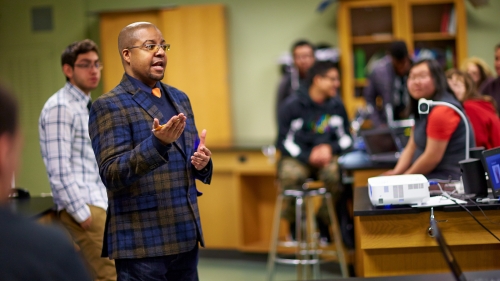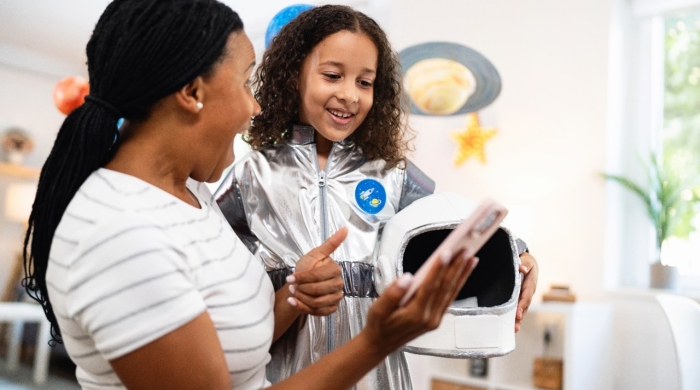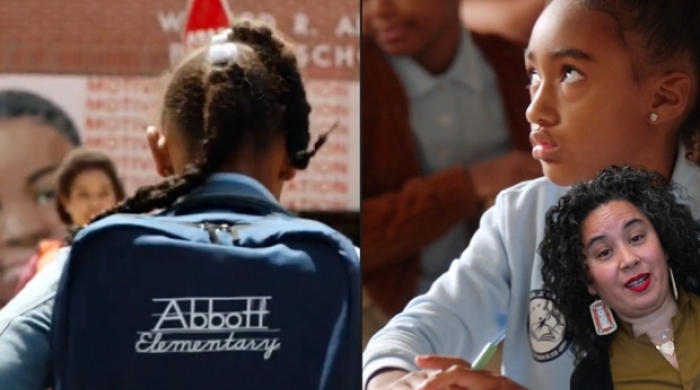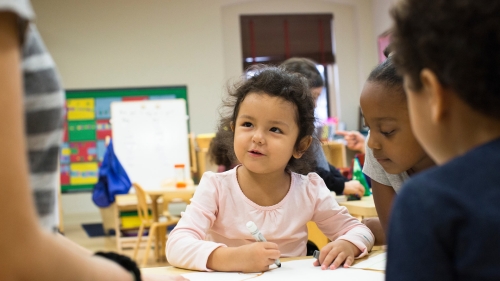Researchers from NYU Steinhardt's Department of Teaching and Learning found that negative articles and articles on younger children were among the most shared.

Getty Images/Peter Cade
When questions about children arise, many parents turn to the internet and social media for advice on topics ranging from eating habits to children’s screen time. But what kind of information are parents most likely to see and share?
A new study by NYU Steinhardt researchers examined how articles about screen time resonated with parents, and found that articles combining attention-grabbing language with credible scientific framing were the most likely to garner immediate and long-term attention on social media.
“Our findings highlight the need to frame science in ways that are both credible and accessible,” says Erin O’Connor, a co-author of the study and a professor of education in Steinhardt’s Department of Teaching and Learning. “Parents deserve information that not only captures their attention, but also supports informed decision-making about their children’s development.”
O’Connor and her co-author Robin Neuhaus, a doctoral student in the Early Childhood Education program, analyzed 136 articles published between 2016 and 2021 to understand which factors drive the most traction on social media, specifically Facebook, X (formerly Twitter), and Pinterest. They used a social media analytics tool to capture social media shares as well as the articles’ “evergreen score,” a value that demonstrates long-term relevance beyond initial engagement.
They found that articles with sensationalist elements, such as warning language (e.g., “alarming,” “irreversible damage”) and strong scientific framing, including broader context for the study and study limitations, received the most shares and had the greatest longevity.
Additional findings:
- Negative content gets shared the most.
- Content about younger children (ages 0 to 10) received more attention than articles focused on teens.
- A small number of studies disproportionately shaped media coverage.
“Our study shows that the most engaging screen time articles blend attention-grabbing language with scientific credibility, driving both short-term virality and long-term engagement,” says Neuhaus. “To improve science communication, researchers, media outlets, and communicators should frame findings with nuance, use accessible language, acknowledge study limitations, and provide context. Parents deserve information that is both engaging and accurate—without unnecessary fear or oversimplification.”
The study, published in the Journal of Children and Media, was conducted in collaboration with the Nested Institute for Families, a nonprofit organization dedicated to advancing evidence-based communication.
This study was supported, in part, by the Institute of Education Sciences, U.S. Department of Education through research training grant (R305B200010) to New York University. The opinions expressed are those of the authors and do not represent views of the Institute or the U.S. Department of Education, and any errors or omissions in this article are solely their own.
Related Articles
The Female Quotient and Steinhardt Partner for Virtual Event
Female entrepreneurs in the health industry discussed innovations that are bettering the lives of parents and childcare providers.
Black Women Science Teachers Use Poems to Explore Their Lives and Career Paths
A qualitative study from Tenure-Track Assistant Professor of Science Education Alexis Riley explores how elder Black women teachers reflect on familial encouragement of scientific curiosity through poetry and biographies.
Why This Education Professor Loves “Abbott Elementary”
TV sitcoms aren't generally known for realism, but Natalia Ortiz, Clinical Assistant Professor of Teaching and Learning, says there's actually a lot that Quinta Brunson's hit show gets right.
Related Programs
Related Department

Teaching and Learning
Department of Teaching and Learning
239 Greene Street, Sixth Floor
New York, NY 10003
Tel: 212 998 5460




